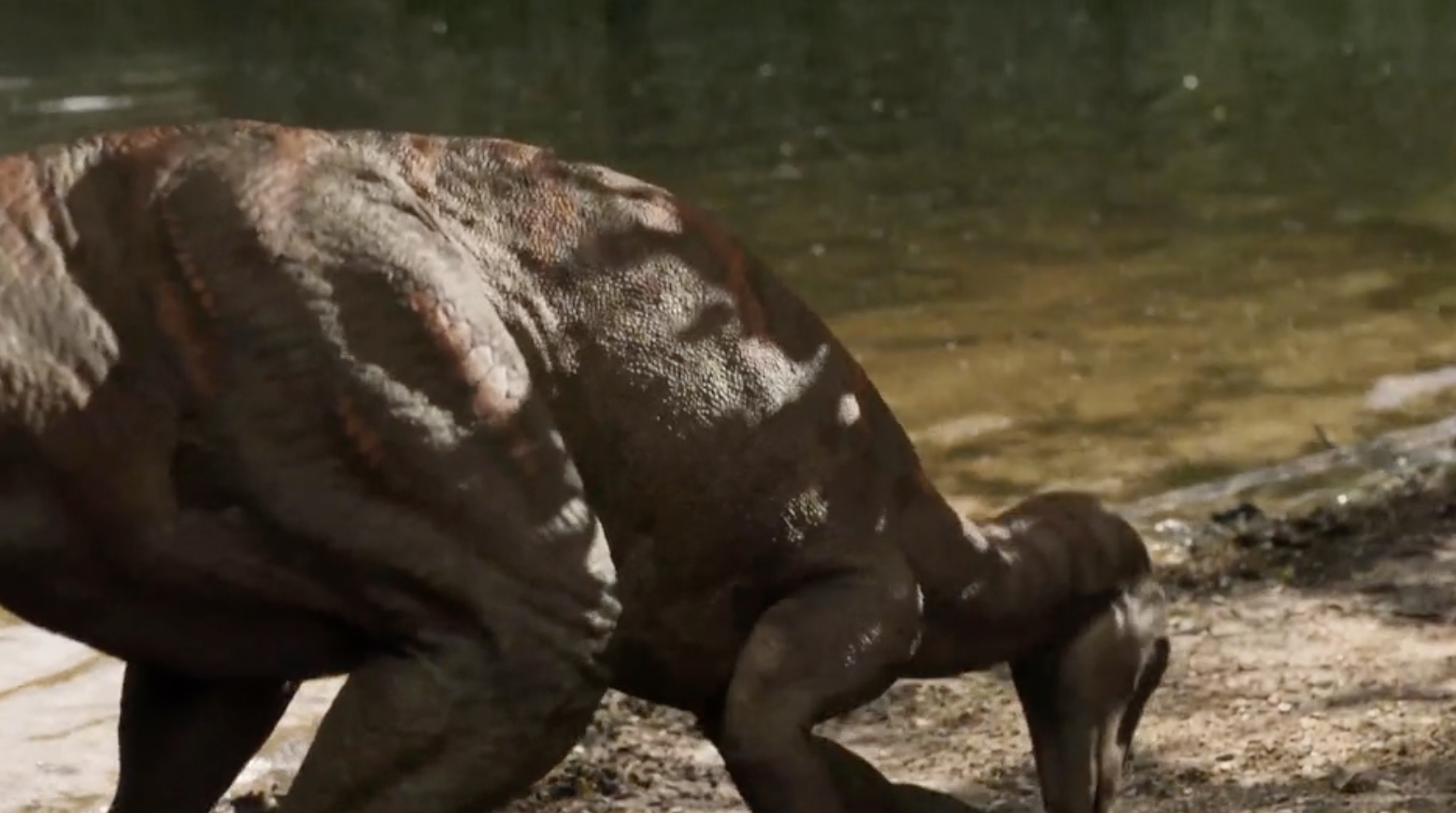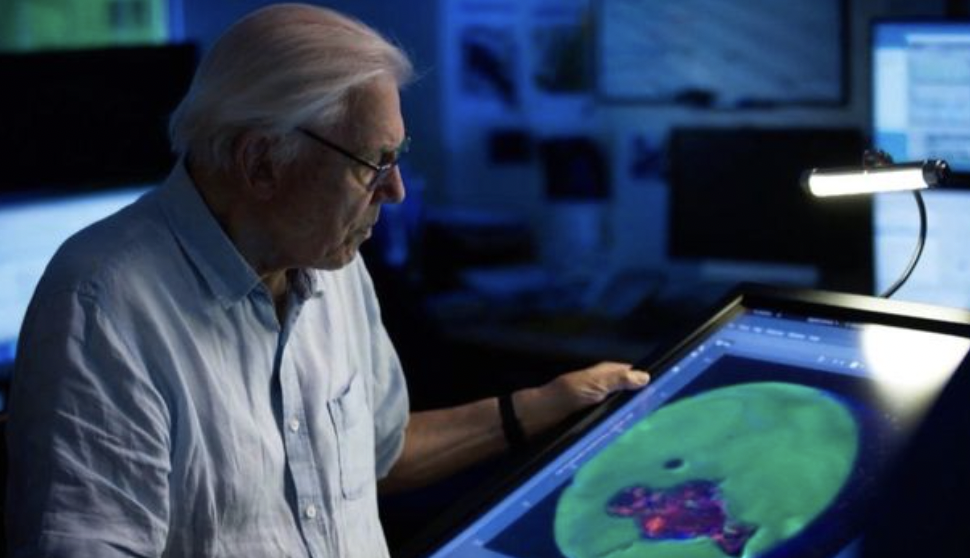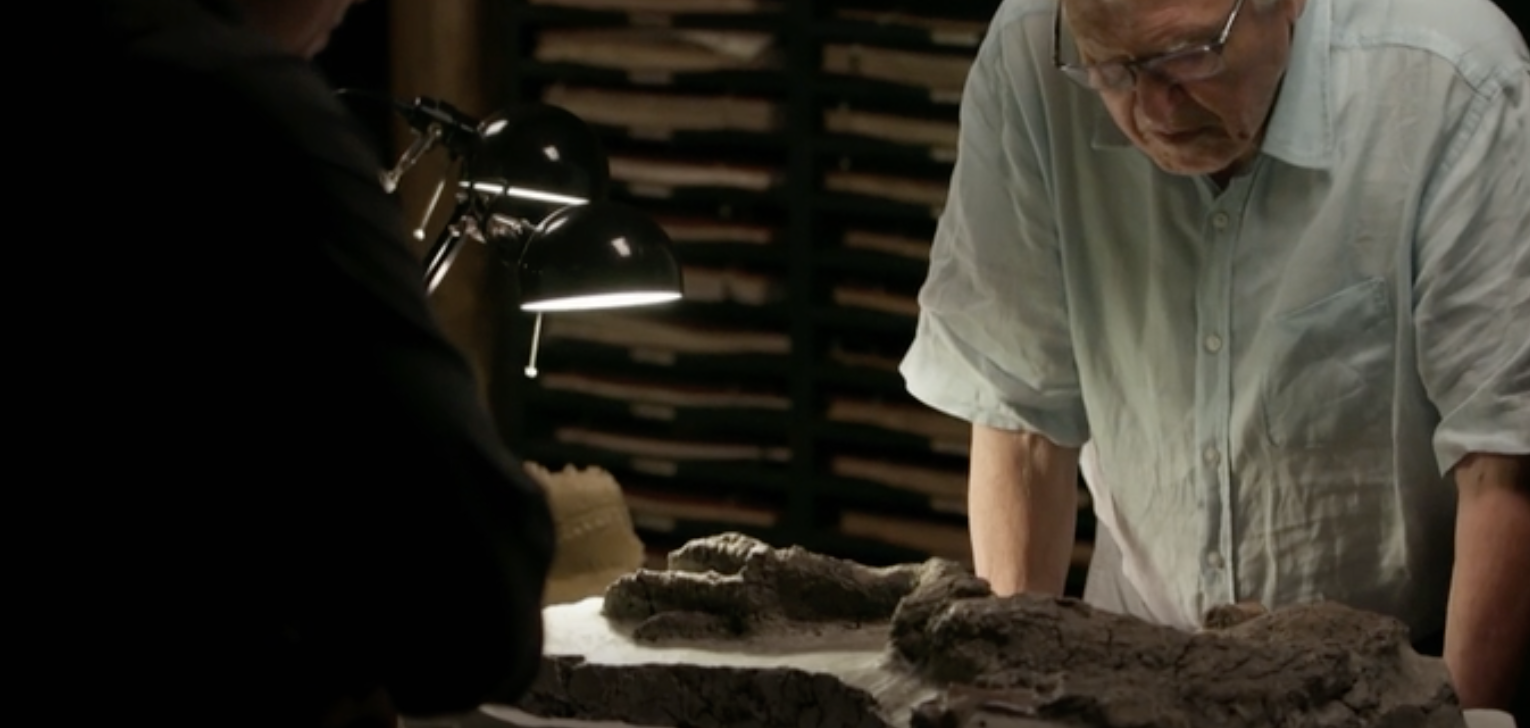Other discoveries include the embryo of a flying Pterosaur
The preserved leg of a dinosaur has been discovered with scientists suggesting it was “killed on the same day” as the giant asteroid which hit Earth and wiped them all out.
The Tanis fossil site in North Dakota has uncovered a treasure trove of buried secrets, according to reports from the BBC.
Among their discoveries is a dinosaur leg, complete with skin, that is believed to have belonged to a creature entombed on the same day as the cataclysmic event 66 million years ago that wiped the dinosaurs out.
Previous fossil discoveries have been dated within several thousand years of the event – but never on the same day.

The BBC has spent three years filming the Tanis dig site for a special broadcast due out on April 15, voiced by none other than national treasure Sir David Attenborough. The Blue Planet visionary will give viewers their first look at some of the many interesting discoveries archaeologists have found, including a fish that breathed in debris during the asteroid collision.
Prof Paul Barrett from London’s Natural History Museum confirmed that the leg belonged to a Thescelosaurus.

“It’s from a group that we didn’t have any previous record of what its skin looked like, and it shows very conclusively that these animals were very scaly like lizards,” he said.” They weren’t feathered like their meat-eating contemporaries.”
He continued: “This looks like an animal whose leg has simply been ripped off really quickly.
“There’s no evidence on the leg of disease, there are no obvious pathologies, there’s no trace of the leg being scavenged, such as bite marks or bits of it that are missing.”
“So, the best idea that we have is that this is an animal that died more or less instantaneously.”
Other finds include a fossilised turtle impaled by a wooden stake, remains of small mammals, skin from a triceratops and the embryo of a flying Pterosaur inside its egg.

“We’ve got so many details with this site that tell us what happened moment by moment, it’s almost like watching it play out in the movies,” Robert DePalma of the University of Manchester and the Tanis dig lead told the BBC. “You look at the rock column, you look at the fossils there, and it brings you back to that day.”
Interestingly, the Tanis dig site is 3,000km from where the asteroid hit the Earth in the Gulf of Mexico, off the Yucatan Peninsula. Researchers say this demonstrates just how powerful its impact and initial devastation was.
Centuries of environmental attacks have left fossils jumbled together, with land and sea creatures now occupying the same space underground. Spherules, small particles of molten condensation, were also found in the gills of fish remains, pointing to the creature breathing in toxic fumes before it met its end.
Such spherules have been chemically and radiometrically dated to the Mexican impact location, meaning: “we’re looking at a piece of the impactor; of the asteroid that ended it for the dinosaurs,” explains Prof Phil Manning, DePalma’s PhD supervisor at Manchester University.
Preserved tree resin at the site containing fallout also points to an extraterrestrial origin.
Dinosaurs: The Final Day with Sir David Attenborough will be broadcast on BBC One on April 15.
Related links:
- Scientists believe there could be an ‘anti-universe’ next to ours – where time runs backwards
- Magical Japanese boulder that’s trapped a demon for 1,000 Years has cracked open suddenly
- Remains of ancient ritual sacrifice victims found near 1,000-year-old mummy







































